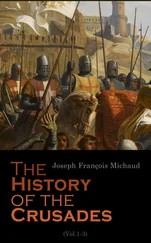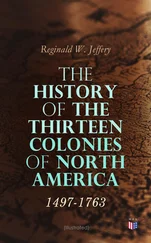"The same course that is taken in England out of towns—every man according to his ability instructing his children. We have forty-eight parishes, and our ministers are well paid, and by my consent should be better if they would pray oftener and preach less . But of all other commodities, so of this, the worst are sent us , and we had few that we could boast of, since the persecution of Cromwell's tyranny drove divers worthy men hither. But I thank God, there are no free schools nor printing , and I hope we shall not have these hundred years: for learning has brought disobedience and heresy and sects into the world; and printing has divulged them, and libels against the best government. God keep us from both!" 211
Thus was the entire colony in ignorance and superstition, and it was the policy of the home government to keep out the light. The sentiments of Berkeley were applauded in official circles in England, and most rigorously carried out by his successor who, in 1682, with the concurrence of the council, put John Buckner under bonds for introducing the art of printing into the colony. 212This prohibition continued until 1733. If the whites of the colony were left in ignorance, what must have been the mental and moral condition of the slaves? The ignorance of the whites made them the pliant tools of the London Company, and the Negroes in turn were compelled to submit to a condition "of rather rigorous servitude." 213This treatment has its reflexive influence on the planters. Men fear most the ghosts of their sins, and for cruel deeds rather expect and dread "the reward in the life that now is." So no wonder Dinwiddie wrote the father of Charles James Fox in 1758: "We dare not venture to part with any of our white men any distance, as we must have a watchful eye over our negro slaves."
In 1648, as we mentioned some pages back, there were about three hundred slaves in the colony. Slow coming at first, but at length they began to increase rapidly, so that in fifty years they had increased one hundred per cent. In 1671 they were two thousand strong, and all, up to that date, direct from Africa. In 1715 there were twenty-three thousand slaves against seventy-two thousand whites. 21 4By the year 1758 the slave population had increased to the alarming number of over one hundred thousand, which was a little less than the numerical strength of the whites.
During this period of a century and a half, slavery took deep root in the colony of Virginia, and attained unwieldy and alarming proportions. It had sent its dark death-roots into the fibre and organism of the political, judicial, social, and religious life of the people. It was crystallized now into a domestic institution. It existed in contemplation of legislative enactment, and had high judicial recognition through the solemn forms of law. The Church had proclaimed it a "sacred institution," and the clergy had covered it with the sanction of their ecclesiastical office. There it stood, an organized system—the dark problem of the uncertain future: more terrible to the colonists in its awful, spectral silence during the years of the Revolution than the victorious guns of the French and Continental armies, which startled the English lion from his hurtful hold at the throat of white men's liberties—black men had no country, no liberty—in this new world in the West. But, like the dead body of the Roman murderer's victim, slavery was a curse that pursued the colonists evermore.
120R. Beverley's History of Virginia, pp. 35, 36.
121See Campbell, p. 144; Burk, vol. i. p. 326.
122Smith, vol. ii pp. 38, 39.
123Smith's History of Virginia, vol. ii. p. 39.
124Virginia Company of London, p. 117, sq.
125Campbell, p. 144.
126Burk, vol. I. p. 319.
127Neill, p. 120.
128Smith, vol. II. p. 37.
129There were two vessels, The Treasurer and the Dutch man-of-war; but the latter, no doubt, put the first slaves ashore.
130Campbell, p. 144.
131Burk, Appendix, p. 316, Declaration of Virginia Company, 7th May, 1623.
132See Burk, vol. i. p. 326.
133Stith, Book III. pp. 153, 154.
134Beverley, 235, sq.
135Campbell, 147.
136Beverley, p. 248.
137Court and Times of James First, ii. p. 108; also, Neill p. 121.
138Bancroft, vol. i. p. 468.
139Neill, p. 121.
140Hist. Tracts, vol. ii. Tract viii.
141Beverley, p. 236.
142Campbell, p. 145.
143Hening, vol. i. p. 146; also p. 552.
144Hening, vol. i. p 226.
145Bancroft, vol. i. p. 178.
146Hening, vol. i. p. 540.
147Ibid., vol. ii. p. 84.
148Hening, vol. i. p. 396.
149Burk, vol. ii. Appendix, p. xxiii.
150Beverley, p. 235.
151Hening, vol. ii. p. 170; see, also, vol. iii. p. 140.
152Beverley, p. 195.
153Hening, vol. i. p. 396.
154Ibid., vol. ii. p. 283.
155Campbell, p. 160; also Bacon's Rebellion.
156Hening, vol. ii. pp. 490, 491.
157Ibid., vol. ii. p. 260; see, also, vol. iii. p. 460.
158Ibid., vol. iii. p. 333.
159Hening, vol. iii. pp. 334, 335.
160Ibid., vol. iii. p. 448; see, also, vol. v. p. 548.
161Hildreth, in his History of the United States, says that the law making "Negroes, Mulattoes, and Indians" real estate "continued to be the law so long as Virginia remained a British colony." This is a mistake, as the reader can see. The law was repealed nearly a quarter of a century before Virginia ceased to be a British colony.
162Hening, vol. v. p. 432, sq.
163Beverley, p. 98.
164Hening, vol. iii, pp. 193, 194.
165Hening, vol. iii. p. 195.
166Burk, vol. ii. Appendix, p. xxii.
167Hening, vol. iv. p. 394.
168Ibid., vol, v. pp. 92, 93.
169Ibid., vol. v. pp. 160, 161.
170Ibid., vol. v. pp. 318, 319.
171Ibid., vol. vi. pp. 217, 218.
172Ibid., vol. vii. p. 466.
173Ibid., vol. vii. p. 81.
174Ibid., vol. vii. p. 281.
175Hening, vol. vii, p. 338.
176Ibid., vol. vii. p. 363.
177Ibid., vol. vii. p. 383.
178Ibid., vol. viii. pp. 190, 191, 237, 336, 337.
179Ibid., vol. viii, pp. 530, 532.
180Ibid., vol. i. p. 226.
181Ibid., vol. iii. p. 251.
182Ibid., vol. iii. p. 459; also vol. iv. p. 131, vol. vi. p. 109, and vol. ii. p. 481.
183Hening., vol. vi. p. 110.
184Ibid., vol. ii. p. 481.
185Ibid., vol. ii p. 270.
186Ibid., vol. ii. p. 493.
187Ibid., vol. iii, p. 451.
188Ibid., vol. iii. pp. 459, 460.
189Ibid., vol. viii. p. 360.
190Ibid., vol. iii. p. 298.
191Ibid., vol. iv. p. 327.
192Ibid., vol. iii. p. 103.
193Ibid., vol. iii, p. 270, and vol. iv. p. 128.
194Hening, vol. iv. p. 126, and vol. vi. p. 104, sq.
195Ibid., vol. viii. p. 139.
196Ibid., vol. viii. p. 522.
197Ibid., vol. viii. p. 523.
198Ibid., vol. viii. pp. 536, 537.
199Ibid., vol. iv. p. 132.
200Ibid., vol. vi, p. 112.
201Hening, vol. iii. pp. 87, 88.
202Ibid., vol. ii. p. 267.
203Ibid., vol. iv. pp. 133, 134.
204Ibid., vol. iv, p. 133.
205Ibid., vol. vii. p. 95; and vol. vi. p. 533.
206Ibid., vol. iv. p. 131.
207Ibid., vol. iii. p. 87.
208Campbell, p. 529.
209Burk, vol. ii. Appendix, p. xiii.
210Foot's Sketches, First Series, p. 291.
211Hening, vol. ii. p. 517.
212Hening, vol. ii. p. 518.
213Campbell, p. 383.
214Chalmers's American Colonies, vol. ii. p. 7.
CHAPTER XIII.
THE COLONY OF NEW YORK.
Table of Contents
1628–1775.
Settlement of New York by the Dutch in 1609.—Negroes introduced into the Colony, 1628.—The Trade in Negroes increased.—Tobacco exchanged for Slaves and Merchandise. Government of the Colony.—New Netherland falls into the Hands of the English, Aug. 27, 1664.—Various Changes.—New Laws adopted.—Legislation.—First Representatives elected in 1683.—In 1702 Queen Anne instructs the Royal Governor in Regard to the Importation of Slaves.—Slavery Restrictions.—Expedition to effect the Conquest of Canada unsuccessful.—Negro Riot.—Suppressed by the Efficient Aid of Troops.—Fears of the Colonists.—Negro Plot of 1741.—The Robbery of Hogg's House.—Discovery of a Portion of the Goods.—The Arrest of Hughson, his Wife, and Irish Peggy.—Crimination and Recrimination.—The Breaking-out of Numerous Fires.—The Arrest of Spanish Negroes.—The Trial of Hughson.—Testimony of Mary Burton.—Hughson hanged.—The Arrest of Many Others implicated in the Plot.—The Hanging of Cæsar and Prince.—Quack and Cuffee burned at the Stake.—The Lieutenant-Governor's Proclamation.—Many White Persons accused of being Conspirators.—Description of Hughson's Manner of Swearing those having Knowledge of the Plot.—Conviction and Hanging of the Catholic Priest Ury.—The Sudden and Unexpected Termination of the Trial.—New Laws more Stringent toward Slaves adopted.
Читать дальше












